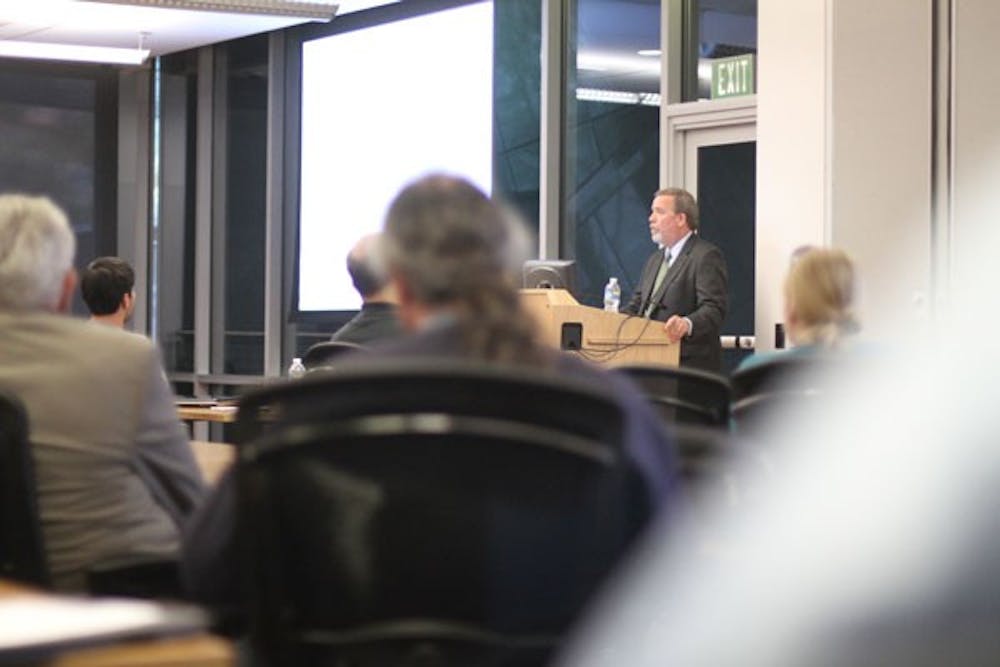Metro Light Rail held its second of two public meetings Tuesday in Tempe to let members of the public voice their opinions on cost-cutting proposals to run trains less frequently and reduce hours of operation.
About 20 people showed up to the meeting at the Tempe Transportation Center on Fifth Street and Forest Avenue to hear Metro Light Rail’s proposals and participate in a question-and-answer session afterward.
Metro Light Rail CEO Steve Banta led the discussion and said Metro is looking to save about $500,000 a year if he cuts are implemented.
“It’s a difficult process to meet our budget needs,” he said. “We want to engage in a dialogue with the community as a whole. The budget problems and the economy is affecting the entire country, every city is looking to make ends meet.”
At this point, Metro is looking at seven possible options to cut from the light rail budget, which will then be presented to the Metro board of directors in May, Banta said.
“As you look across the country, a lot of folks are raising fares. When that happens, you lose ridership and that’s a place where none of us want to be,” he said. “We’re looking at all opportunities to preserve as much service as we can.”
Possible cuts include reducing peak service frequency from 10 minutes to 12 or 15 minutes, reducing the frequency of trains during mornings and nights, and eliminating late-night service on weekends. The light rail’s peak hours of service are between 6 a.m. and 7 p.m.
Hillary Foose, a spokeswoman for Metro Light Rail, opened the discussion and moderated the question and answer session.
“Because we have higher ridership on Saturdays in general, we see [less] savings on Saturdays because we are potentially losing more riders,” she said.
Banta went through each option specifically, and the audience especially focused on weekend service cuts.
If late-night services on weekends are cut, Metro could save $350,000, Banta said.
These potential changes are the result of a decline in sales tax revenue after the economic slowdown. Sales tax revenue is the largest funding source for transit services in the Valley, including the light rail, according to the Metro Web site.
Banta said fare revenue supports about 25 percent of light rail’s operating costs.
Though ridership surpassed first-year predictions, it can’t keep up with the drop in sales tax, he said.
“We had a fare increase in July of 2009 and it didn’t keep in pace with the downsized taxes,” he said. “It didn’t completely help.”
The public filled out survey sheets at the end of the meeting to indicate which options people are most concerned about. Any changes made will become effective July 26.
“We’re here for you,” Banta said to the meeting attendees. “We’re still in the throes and your input is much needed.”
Reach the reporter at mmbarke1@asu.edu





